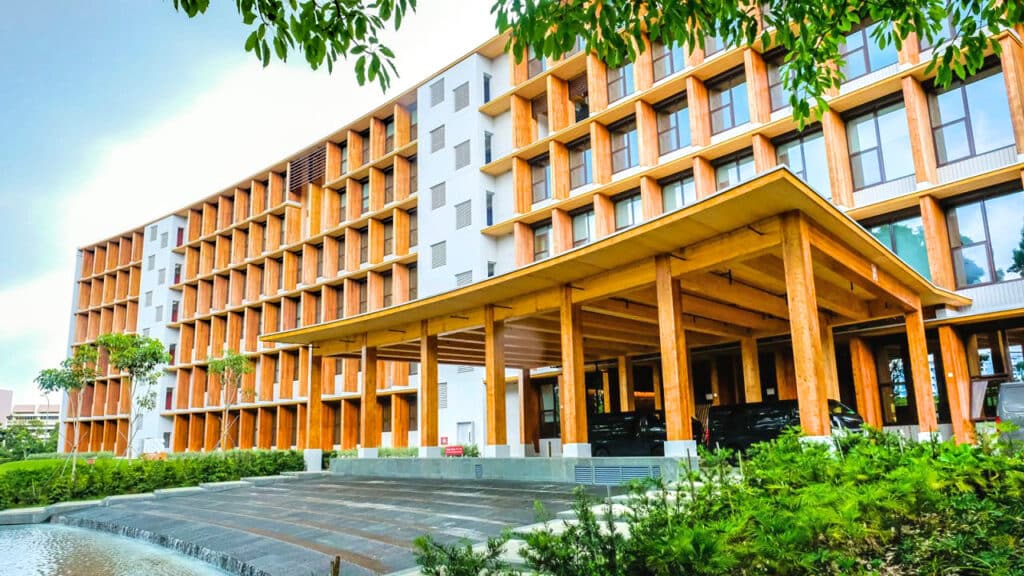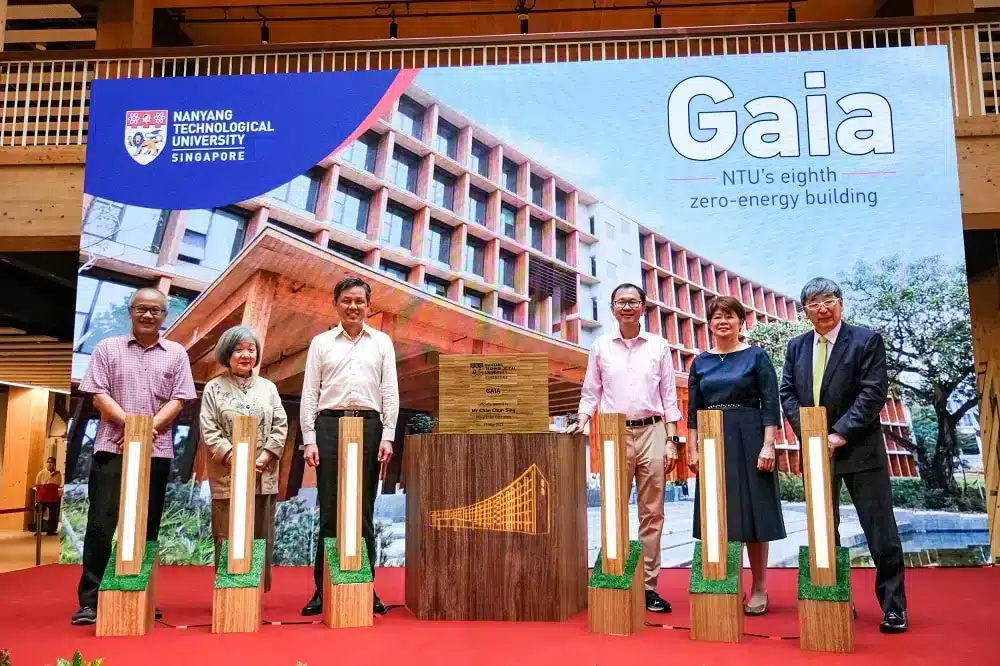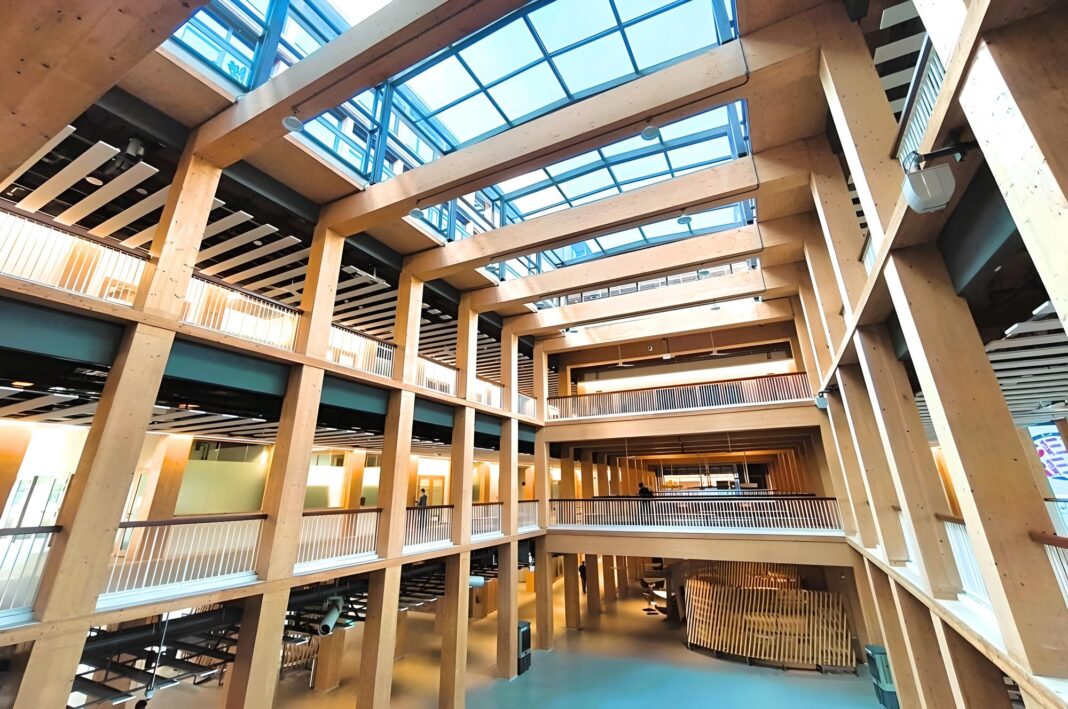Singapore’s “timber building of the future” has a mould problem, but it is due to condensation and rain, and crucially, not the type of Austrian imported spruce used to build the mass timber project. That is according to two independent subject matter experts who assessed the US $94 million building earlier this week.
It comes after Bloomberg reported that the mouldy problem with Nanyang Technological University’s Gaia building was due to the exposed spruce’s reaction to the country’s tropical environment. This led the mainstream media to question the durability of mass timber buildings made from imported timber.
However, Kevin Hill, a pioneer in bringing cross-laminated timber and glulam to Singapore, revealed to Wood Central that it was too premature to draw conclusions about the use of imported timbers in tropical climates: “We have not witnessed this problem before; no one has bothered to check (the 20) other buildings (in Singapore which have used mass timber). There is no discussion over the coatings and surface treatment, (but) only over the spruce product.”

Now, Tham Kwok Wai, a global expert in indoor air quality, ventilation, and engineering control for mitigation and airborne disease transmission, and Shinya Okuda, an award-winning architect and expert in the use of mass timber, have reported that mass timber was not the cause of the mould.
The timber meets certified regulatory standards and is treated with protective sealants, The mould is pervasive due to its warm tropical climate and can grow on any surface if the environment is conducive, such as in dark, damp and poorly lit areas,
Associate Professors Tham Kwok Wai and Shinya Okuda, both professors from the College of Design and Engineering at the rival National University of Singapore
According to Nanyang Technological University, the mould was mostly found in air conditioning supply grilles and furniture surfaces in affected rooms. “Condensation occurs when the external humid air comes into contact with cooler surfaces,” according to a media statement published by the university, “which includes the windows and doors of offices when they are open for prolonged periods of time.”

The new building spans 220 metres and houses teaching spaces, a research centre, faculty offices, a basement car park, and an ancillary block. It utilises a modular timber frame system, which allows for the prefabrication of mass timber components off-site, reducing on-site construction time and manpower.
At the building launch, Singapore’s Minister for Education, Mr. Chan Chun Sing, said, “I am heartened that our Institutes of Higher Learning (IHLs) are deeply committed to building and sustaining green campuses. As part of the Singapore Green Plan 2030, our IHLs play an important role in making sustainability a competitive advantage for Singapore.”
- To learn more about this project, visit Wood Central’s special feature.






